|
Ruskin Park, Denmark Hill, south London
Spring time in a lesser known south London park
(Photos ©urban75, April 2007, updated March 2011)
Opened up to the public in 1907, Ruskin Park occupies the site and grounds of several 18th century houses by Denmark Hill.
In the 1840s, the area was so mellow that the the composer Felix Mendelssohn - who was staying at 168 Denmark Hill - was so inspired by the tranquillity he penned a piano tribute to its silence.
Sadly, his tune failed to set the world alight under its original name of, 'Camberwell Green' but later became a hit when he renamed it to, 'Spring Song'.
Living just down the road at number 163 was the famous Victorian smartarse, art critic and reformer John Ruskin, who described his house, this:
"It stood in command of seven acres of healthy ground... half of it meadow sloping to the sunrise, the rest prudently and pleasantly divided into an upper and lower kitchen garden, a fruitful bit of orchard and chance inlets and outlets of wood walk."
John Ruskin had lived all around the area, starting off at 28 Herne Hill, then moving to 163 Denmark Hill in 1847 before finally buggering off out of the area in 1872, moaning about the new railways 'spoiling his view'.
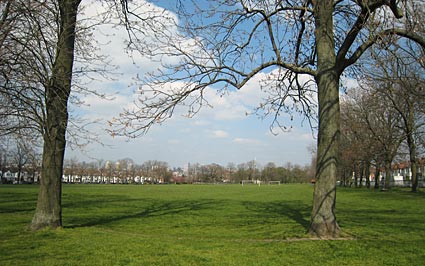
After Ruskin died in 1900, the developers started to encircle the area, striking up preliminary agreements for new housing.
Thankfully, an enterprising local resident called Frank Trier set up a campaign for a public park, cunningly whipping up the publicity by saying that it would be named after Ruskin.
The ploy worked, and the Ruskin Park committee were able to snap up the first 24 acres for £48,000 in January 1906, with funds raised from private donors and the then boroughs of Lambeth, Camberwell and Southwark.
The houses on the site were then cleared away, leaving just the portico from number 170 Denmark Hill (see below) and a number of trees from large gardens.
Designed and laid out by Lt Colonel JJ Sexby, Chief Officer of Parks to the London County Council (LCC), the park opened on 2nd February 1907, with a further 12 acres added for playing fields three years later.
With the newly opened King's College Hospital nearby, the park became an annexe to the hospital during World War I, with temporary huts used to house convalescent soldiers.
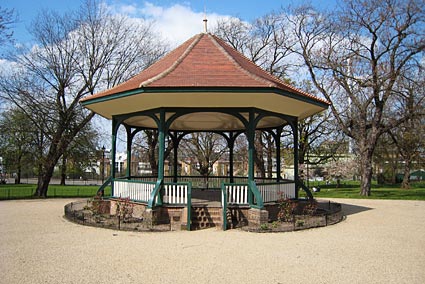 
The park today
Now a fine rolling park with open spaces, recently restored bandstand and wooded areas, some original features of the house and grounds can still be seen, including the old porch to the house, a delightful little pond and a superb tree collection.
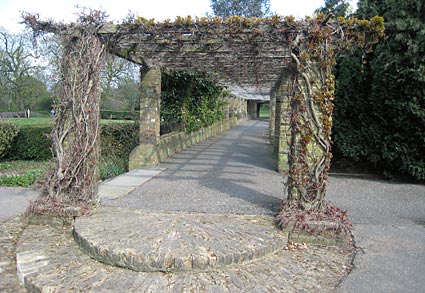
We settled down for a picnic near here and were amazed at the amount of wildlife warbling, shuffling and scampering about.
Naturally, there were 'nuff squirrels, crows and bloody pigeons on the scene, but we also heard blackbirds, robins, dunnocks and quite possibly a woodpecker. Or maybe it was a ringtone.
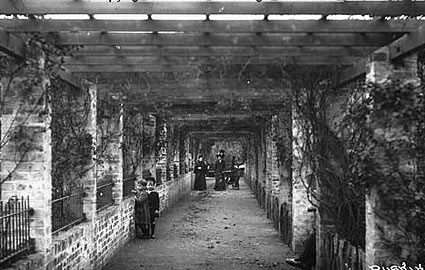
View from 1912.
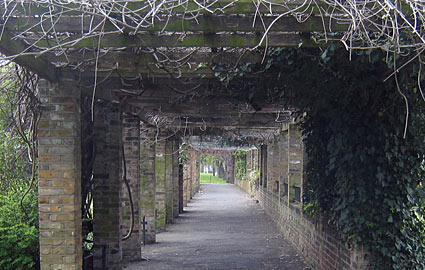
Modern view, taken from a similar angle.
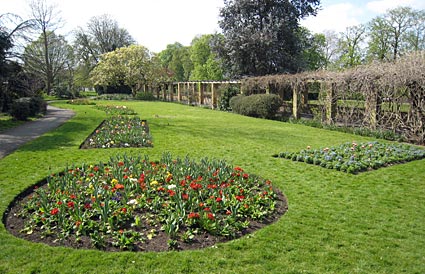
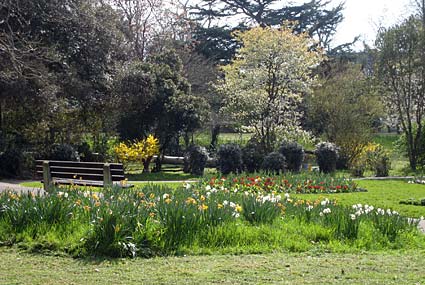
If you know anything about trees (sadly, we don't) you can discover rare species such as the Judas-tree (Cercis siliquastrum), maidenhair tree (Gingko bilboa), ashleaf maple (Acer negundo) and Indian bean-tree (Catalpa bignonioides).
Ruskin Park contains over 600 trees representing over 40 species, with the majority planted in the early 1900s.

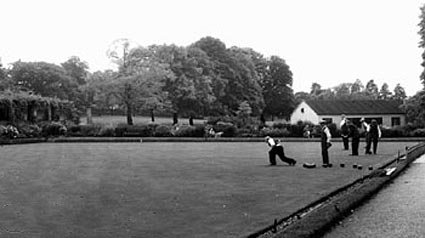
Ruskin Park bowling green (circa 1955)
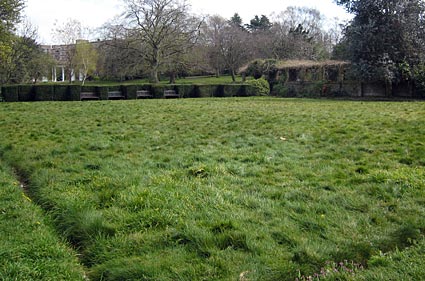
The slightly bumpier view today.
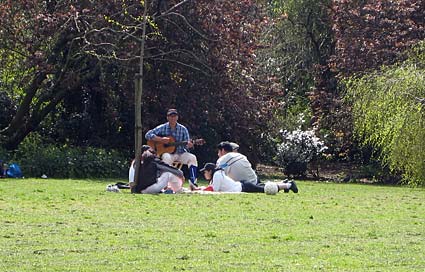
"Kumbaya...."
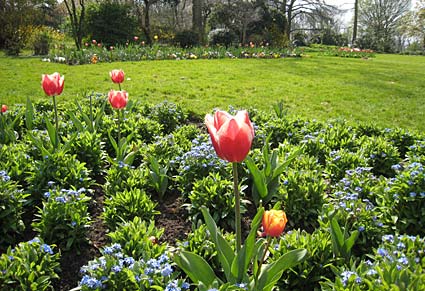
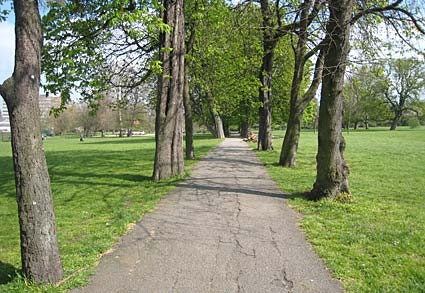
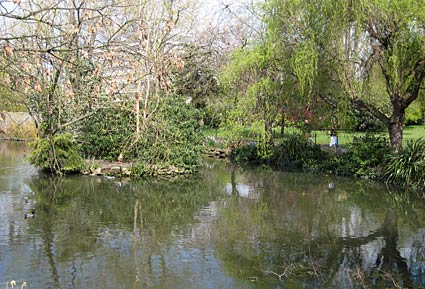
I am indebted to the excellent London WildWeb site for telling me that around the pond can be found trees such as aspen (Populus tremula), ornamental cherry (Prunus spp), Caucasian wingnut (Pterocarya fraxinifolia) and the Chinese corkscrew willow (Salix babylonica Tortuosa). I've been informed that the Chinese willow is on the righ tof the photo above and the trees were associated with witchcraft in medieval times.
But wait! There's more, as the site tells of, "Tall fringing vegetation of great willowherb (Epilobium hirsutum), purple-loosestrife (Lythrum salicaria), water figwort (Scrophularia auriculata), Indian balsam (Impatiens glandulifera) and pendulous sedge (Carex pendula) provides shelter for resident moorhens, mallards and Canada geese."

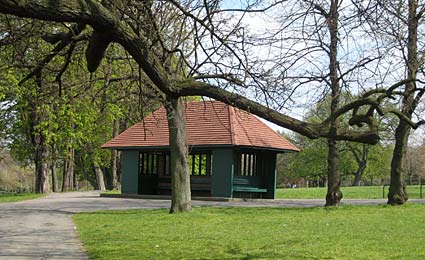
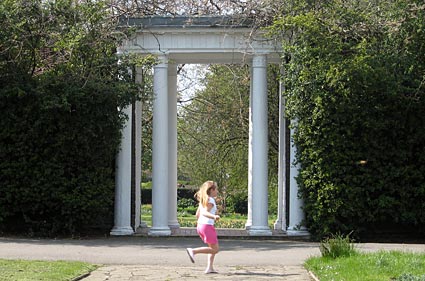
The surviving portico from number 170 Denmark Hill.
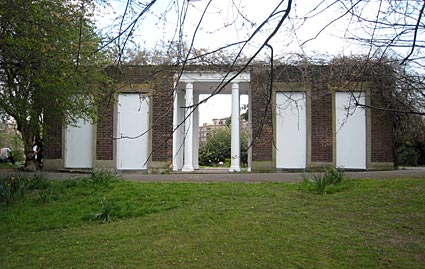
View from the west side.
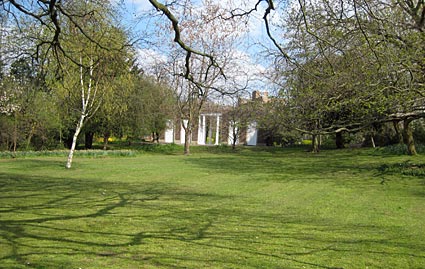
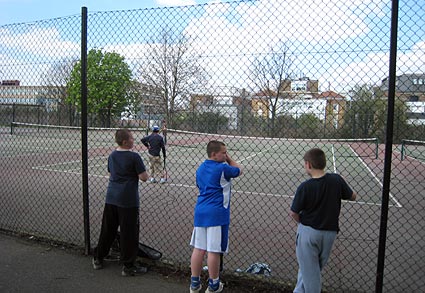
There's tennis courts by the north side of the park, running parallel with the railway tracks that run to Denmark Hill station to the east.
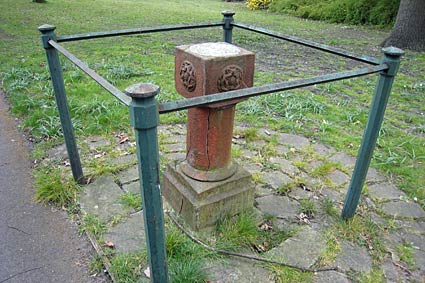
Protected by a railing, this is all that remains of a sundial that was in the garden of a house on Denmark Hill. It commemorates Mendelssohn's visit to the area.

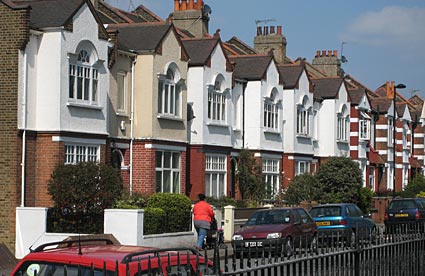
The park is surrounded by 1920/30s housing stock.
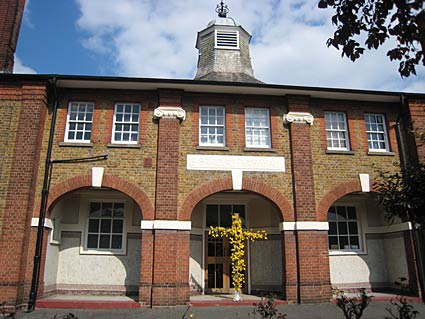
The attractive St Saviour's Parish Hall faces the park.
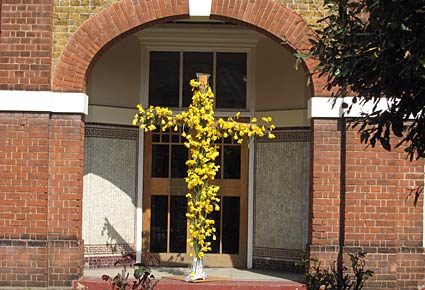
Flamboyant Easter cross made up of daffodils.
(Thanks to urban75 posters for the updates to this article).
More: Ruskin Park in the spring, London, 2011.
Getting there: Train: Denmark Hill, Loughborough Junction
Bus: 40, 42, 68, 176, 185, 468, 484, P4, or a bit of a hefty walk from Brixton tube

« back to features homepage next »
|
|






















